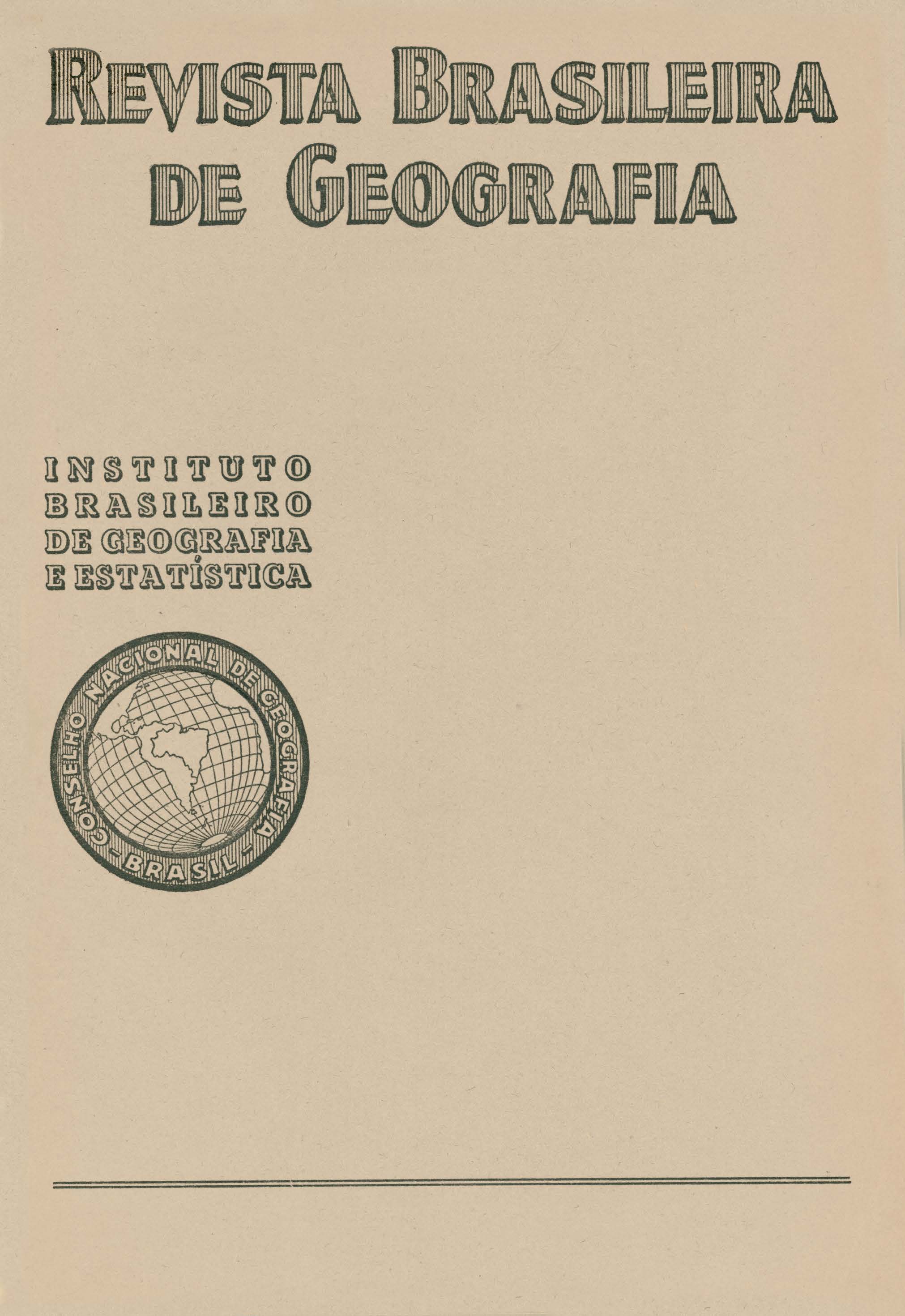Divisão territorial do Brasil
Resumo
In this article Lieutenant Colonel João Segadas Viana, a distinguished army officer, submits a suggestion concerning the new territorial division of Brazil, with a favourable report from Commander Thiers Fleming, who is a thorough authority on the subject.
He states that the problem has occupied the attention of our learned men and of some legislators ever since the early days of our existence as an independent nation and opines that the territorial division of a country must aim at facilitating its administrative life, owing to the impossibility of concentrating in a single hand the whole of the public administration.
He studies the pertinent exemples furnished by France, nazíst Germany and Italy, where the interests of the mother country were not subordinated to those of a regional character, and had for their main objective avoíding the want of proportion among the provinces and facllitating in a general way the administration of the country.
Referring specially to Brazil he recalls the names of Vergueiro, Evaristo da Veiga, Cãndido Mendes, Sousa Franca - ali during the time of the Brazillan Empire - and Amaro Cavalcante, Rangel Pestana, Quintino Bocaiuva, during the Republic, who advocated the new division.
He cites the works on the subject written by Teixeira de Freitas in 1932 and Everardo Backeuser in 1933, besides others.
He analyses the present Brazilian division, started at the time of the general captaincies in .the colonial days; the modification undergone by the extraordinary pioneering work of the hinterland penetration ("bandeiras"), resulting in the formation, inter alia, of the provinces of Minas, Goiaz, Mato Grosso and Rio Grande do Sul, and the action of the republic with the separation of those of Paranã and Amazonas from S. Paulo and Pará.
He describes with a Jively pen the innumerable inconveniences of the present division, stressing that the Brazilian States could be divided into three great classes, viz:
- a) those exceedingly large and unpopulated, such as Pará, Amazonas, Mato Grosso and Goiaz;
- b) those too populated und relatively large. namely Minas Gerais, Baia, Rio Grande do Sul and S. Paulo, and
- c) the intermediary States under two aspects population and area.
Referring to those coming under the classification b), he says that in them, to enhance the evil caused by their relative excess of population, there is the circumstance of thelr being the federated units of the greatest economic potentiality.
BY comparing the States of New York and Michigan, in the U.S.A. with those of Minas and S. Paulo, both in the 15 million inhabitants group, the former two represent 11.5% of the general North-american total, whereas. the latter two correspond to 33.3 % o f the Brazilian total. Added to this there is the fact that the State of S. Paulo contributes with 50 ); of the total exports and revenue of the Union.
Affirming that he does not pretend the new division which he submits to be perfect, but proclaiming the necessity of making a change in Brazilian territorial picture, he summarizes, in a general manner, the criteria that should be adopted for the solution of the problem: The criterion of the populations, which is inadequate to Brazil, a new country, unexplored in its greatest extension and with a population crowded along the sea coast (an imaginary linedrawn parallel to the littoral and 500 kilometres distant therefrom would hold, in this narrow strip - 40 ~; of the total area - 43 out of the total 45 million inhabitants of Brazil), and the other criterion of area, which the author subscribes.
For its application he suggests the following measures: a) To fix the minimum limit of the populatlon of each State (200.000), which, if unattained, would be considered a territory and come under the Union administration; b) to determine an average area, aiming at dividing· the larger States by population, and c) not to adopt a rigid criterion for fixing the area. within the area criterion the author establishes two types, one from 85 to 130,000 square kilometres for the rich zones and another comprising from 130 to 170,000 square kilometres for the poor ones. The minimum area being 85,000 and the maximum 170,000. Thus the Largest State would not contain twice the area of the smallest, whereas, at present, the State of Amazonas is 80 times the size of Sergipe, which, being poor, is 26 times smaller than the rich State of Minas Gerais.
In his opinion the boundaries should be determined by rivers In preference but, in their absence, by mountains.
Under annexed statements he presents the country divided into 27 States, 1 Federal District and 39 territories, together with a detailed description of the boundaries of the proposed division.
He brings his article to a close by making an appeal to the national governing bodies reminding them of the Ideal upheld by that noted tribune, Antonio Carlos Ribeiro de Andrada, introducing into the Constitution the alterations that would allow facing this problem, In the way France, our spiritual mother, did, when, 150 years ago, she consolidated her territory. by means of a well studied division, which up to this day has not been changed.






